Sittwe is situated on an estuarial island at the confluence of the Kaladan River, Myu River, and Lemyo River. The location of Sittwe is between East Longitude 92deg 56′ and North Latitute 20deg 7′ and 22deg 17′.
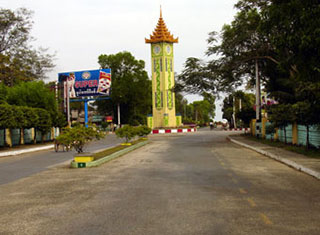 |
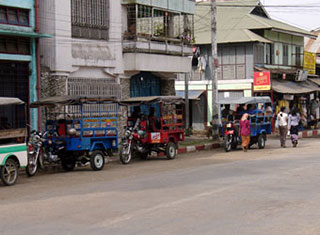 |
This port city of the Rakhine State sits at the mouth of the Kaladan River where it empties into the Bay of Bangal. Off shore delta islands form a wide protected channel that has served as an important harbour for many centuries. The city started as a trading port around 200 years ago and further developed after the British occupation of 1826. International trade alone the coast bloomed during the British era. Two huge cargo steamers a day plied back and forth between Calcutta and Sittwe. Scottish short-storywriter and novelist Hector Hugh Munro, known by his pen name ‘Saki’, was born here in 1870. There is a distinctive Rakhine twist on standard Myanmar culture that includes the enjoyment of much spicy food and brighter-coloured clothing.
The climate in Sittwe is moderate. Rainfall in the year round is not more than 200″. Monsoon starts in the last week of May and heavy rainfall months are June, July and August. The best month of the year is November and the best travelling months are November up to February.
Interesting Places
MAHAMUNI BUDDHA IMAGE
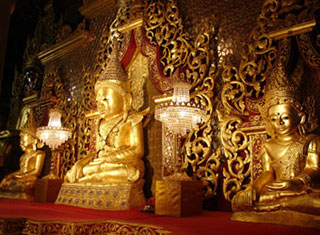 |
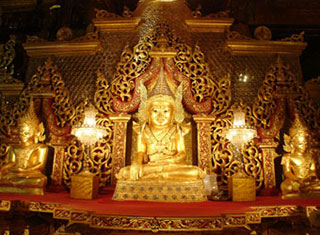 |
This temple is situated in the centre of town and features a large plain shed supported by pillars decorated with glass mosaic. A large seated Buddha image was cast in 1900 in the Rakhine style with the royal costume common to many Rakhine images. The face of the figure shines with gold, while the rest of the body is of bronze.
This is the only place where town people celebrate the annual lighting festival at the end of Buddhist Lent which usually falls in the month of October and November.
BUDDHIST MUSEUM
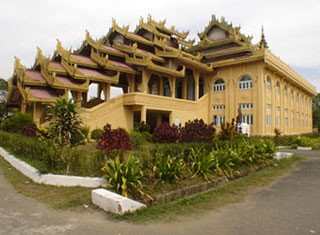 |
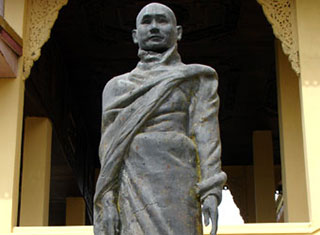 |
This modest two-stroey museum is the best place in Myanmar to view Rakhine Style Buddha images. The collection here represents a rare instance of historical preservation. Most of the images are under a meter in height with the royal attire common to Rakhine Buddhas Images. The majority dates to the Mrauk U period, while a few date as far back as the Wethali era and are made of bronze, silver, quartz or alabaster. There are also some Indian Buddha images and Hindu deities on display, a few Thai and Japanese Buddha statues, silver coins from the Mrauk U era, clay pipes, terracotta votive tablets and engraved astrological charts. Entry is free.
VIEW POINT
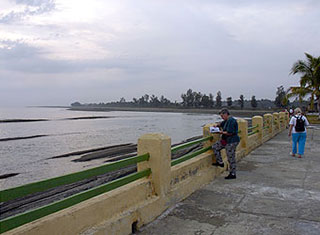 |
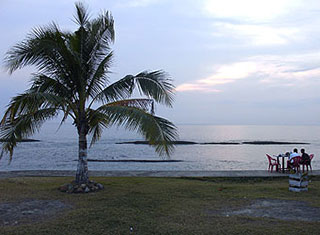 |
The View Point is a lovely recreational spot where one can enjoy breathing fresh sea breeze. It shows the panoramic view of Baronga islands on the other side of the Kaladan River, and also the Layshinedaung savage island lighthouse. The View Point was also known as Farkir Point.
THALONDAW DATT PAGODA
Thalondaw Datt Pagoda is situated in the western end of the town lying over the Ahgyettaw ridge near the north-western corner of the Royal Lake. This pagoda is said to have been donated and built by King Ashoka. It was called Letwai Thalonedaw Datt because Lord Buddha’s left thigh bone relic was enshrined in this pagoda.
RAKHINE STATE CULTURAL MUSEUM
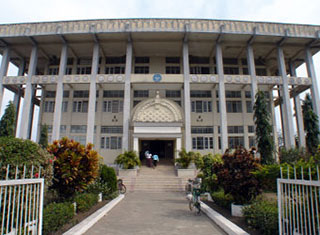 |
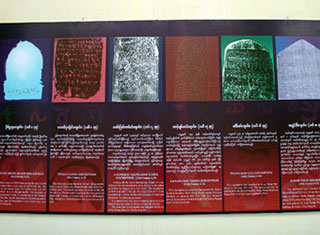 |
SITTWE MARKET
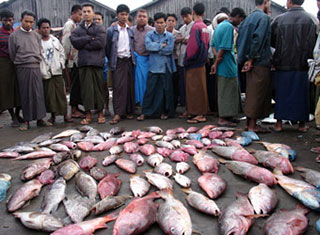 |
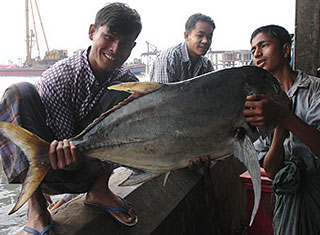 |
